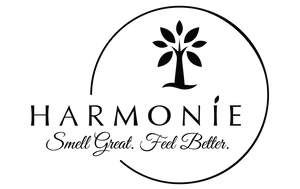Shop The Best Non-Toxic Home And Body Fragrances: Key Ingredients to Avoid
Are you searching for ways to Shop The Best Non-Toxic Home And Body Fragrances that are genuinely safe and healthy? Many fragrance products marketed as "non-toxic" or "clean" can still contain hidden ingredients that may affect your health and wellbeing. Understanding what ingredients to avoid and what to look for is essential for choosing truly non-toxic options for your home and body. This guide will help you identify the key toxic substances commonly lurking in fragranced products and give you practical advice on shopping smarter for safer, high-quality fragrances.
Shop The Best Non-Toxic Home And Body Fragrances: Why Ingredient Awareness Matters
The Hidden Risks in Conventional Fragrances
Many traditional home and body fragrances use synthetic chemicals designed to enhance scent longevity and intensity, but these can come with health risks. Commonly used ingredients such as phthalates, synthetic musks, and certain preservatives are linked to hormone disruption and allergic reactions. Since fragrance formulas are often proprietary, manufacturers mask these chemicals simply behind the word "fragrance" or "parfum," which hides the full ingredients list and makes it difficult for consumers to know what they’re truly using in their personal spaces or on their skin.
The Importance of Transparency and Ingredient Disclosure
Shopping for non-toxic fragrances requires brands that prioritize transparency by fully disclosing their ingredients. This openness allows consumers to make informed decisions, especially if they have sensitivities or want to avoid hormone-disrupting or allergenic chemicals. Look for brands that share detailed ingredient lists and certifications from trusted third-party organizations to ensure authenticity and safety of their fragrance products.
Key Toxic Ingredients to Avoid in Non-Toxic Fragrances
Phthalates: The Invisible Endocrine Disruptors
Phthalates are a group of chemicals frequently used as fixatives to make fragrances last longer. Unfortunately, they are known endocrine disruptors linked to reproductive toxicity and thyroid problems. Despite growing awareness, phthalates can still be found in many fragrance products unless specifically labeled as phthalate-free.
Lilial and Other Banned Chemicals
Lilial (butylphenyl methylpropional) has recently been banned in the EU due to reproductive toxicity concerns but remains a common scent enhancer in many other markets. Avoid products containing this ingredient, along with other known harmful substances like parabens, synthetic nitro musks, and formaldehyde-releasing preservatives, as they can cause allergic reactions and long-term health issues.
- Diethyl Phthalate (DEP): Common plasticizer, hormone disruptor
- Lilial: Synthetic floral scent banned in EU
- Musk Ambrette: Linked to early puberty and hormone disruption
- Parabens: Preservatives linked to endocrine disruption
- Nitro and Polycyclic Musks: Environmental bioaccumulators
What to Look For in Truly Non-Toxic Perfumes and Home Fragrances
Natural and Botanical Ingredients
Non-toxic fragrances often rely on botanical ingredients such as essential oils, absolutes, and plant extracts. These ingredients provide complex and pleasant aromas without the health risks associated with synthetic chemicals—although it’s important to note that some essential oils can cause allergies if used in high concentrations.
Safe Synthetics and Transparent Formulations
Not all synthetics are harmful. Some fragrance brands use "safe synthetics," which are lab-created molecules designed to mimic natural scents but with improved stability and lower allergenic potential. However, since "safe synthetics" is not a regulated term, careful evaluation of ingredient transparency and third-party certifications is necessary to confirm safety claims.
Understanding Alcohol Bases and Their Impact on Toxicity
What Is Denatured Alcohol and Why It Matters?
Alcohol is the primary carrier in most perfumes and home fragrance sprays. Denatured alcohol means it has additives to make it undrinkable, which may include toxic substances. Many non-toxic fragrance brands aim to use organic or non-denatured alcohol bases to avoid harmful additives, although this increases production complexity and costs.
Choosing Alcohol-Free or Low-Toxicity Options
Some truly non-toxic fragrances use alcohol-free bases, such as carrier oils in perfume oils or water-based diffusers for home scents. These reduce the exposure to harmful solvents and better preserve the integrity of botanical ingredients. When shopping, consider products with transparent disclosure regarding their alcohol or solvent bases.
How to Identify Reliable Non-Toxic Fragrance Brands
Ingredient Lists and Certification
Always look for brands that proudly publish full ingredient lists and offer certifications from recognized organizations such as EWG Verified, Made Safe®, or Leaping Bunny (cruelty-free). These certifications ensure adherence to stringent standards for ingredient safety and ethical practices.
Customer Reviews and Independent Testing
Reading customer feedback and checking third-party ingredient analyses on platforms like Think Dirty or the Environmental Working Group database can be valuable tools. Additionally, reach out to brands directly to inquire about ingredient sourcing and testing. Brands committed to safety will be transparent and responsive.
Tips for Shopping The Best Non-Toxic Home And Body Fragrances
- Look for full ingredient transparency including fragrance components
- Avoid products listing only “fragrance” or “parfum” without details
- Choose products free from phthalates, parabens, lilial, and synthetic musks
- Prioritize botanical or organic ingredients and non-denatured alcohol bases
- Check for certifications like EWG Verified or Made Safe®
- Test small samples to check for allergic reactions or sensitivities
- Consider fragrance oils or solid perfumes as alternative formats
Final Thoughts: Shop The Best Non-Toxic Home And Body Fragrances with Confidence
Choosing truly non-toxic home and body fragrances requires knowledge of harmful ingredients and an eye for transparent, trustworthy brands. By avoiding common toxins like phthalates, lilial, synthetic musks, and denatured alcohol while seeking out botanical components and verified certifications, you can enjoy beautiful scents without compromising your health. Embrace smarter shopping habits and discover safer fragrance options that enhance your environment and well-being. Ready to refresh your collection? Explore and Shop The Best Non-Toxic Home And Body Fragrances curated to meet your highest safety standards today.





